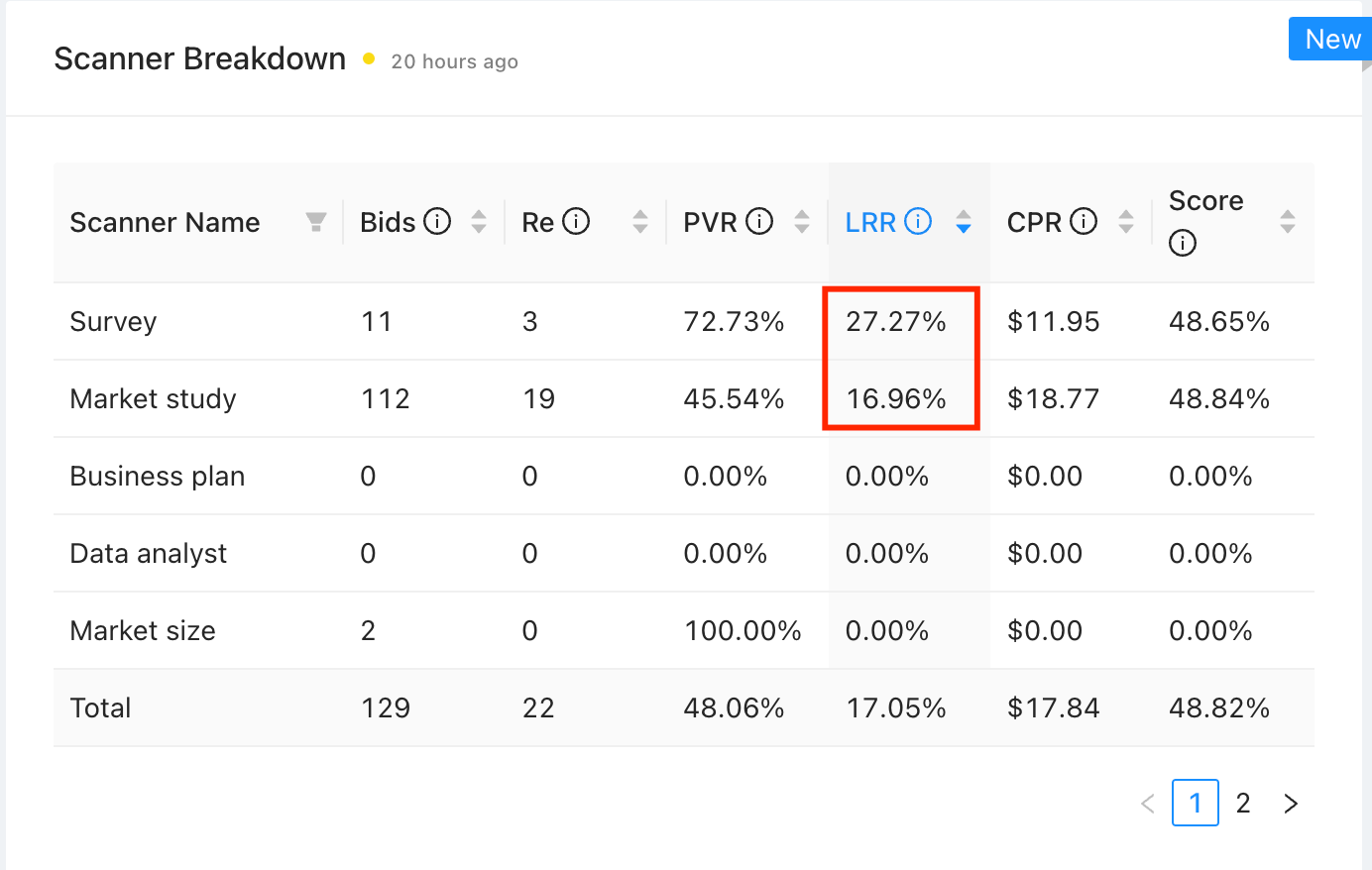How a Marketing Research Agency Landed 5 Projects in One Month with GigRadar
When it comes to manual prospecting on Upwork, many freelancers face the same challenges—limited work hours, imprecise targeting, and missed leads due to time zone differences. Business Intelligence, a management consulting and analysis company specializing in European and Middle Eastern markets, found itself in exactly that situation..
The founder, Alina Krekhovets, depended on a single lead generator (and a spreadsheet of pre-written proposal templates) to pitch new prospects but struggled to keep up:
“By the time we responded, a lot of job posts were already closed,” she explains.
Here’s the story of how she switched to GigRadar, solved these issues, and by the third month of using the platform secured five brand-new projects.
Alina’s Core Expertise
Alina’s agency specializes in market research. They conduct surveys, interviews, and focus groups to gather key insights.
In addition, the agency performs secondary research, develops market-sizing models, and supports startup founders and investors with business plans.
Upwork was her main channel for new business until repetitive tasks began consuming her time, causing her to miss promising opportunities.
The Manual Approach and its Drawbacks
Before GigRadar, Alina handled nearly all lead generation manually, aided by a basic spreadsheet of letter templates. Either she or her lead generator searched for relevant jobs, dropped in (or removed) lines from a master cover letter, and tried to keep track of everything by following set criteria around budget, location, and client history.
Three main obstacles repeatedly cropped up:
1. Slow Response Times Because Alina’s helper only had a few hours a day to dedicate to Upwork, job posts that appeared overnight sat unattended for 18-20 hours.
“On Upwork, everything moves quickly,” says Alina. “Many great projects would get filled before we even saw them.”
2. Industry-Matching Errors The proposals mentioned specialized experience in the client’s industry, but her assistant often misread the company’s website.
“They’d see truck pictures and assume it was logistics, when, in fact, it was something else entirely. AI can spot the industry just by scanning the job post. It’s tough to teach that knowledge if you haven’t seen it a hundred times.”
3. Weak Follow-Up Questions Alina wanted to show genuine engagement by asking thoughtful questions about funding, competitors, or overall goals. But her lead generator, not knowing the ins and outs of her work, ended up asking bland or irrelevant questions that failed to spark a deeper conversation.
The result: too many missed opportunities and wasted effort on posts that weren’t a good fit. Since everything was done manually, only about 20% of posts were viewed and roughly 10-15% received replies.
Discovering GigRadar
Alina first heard about GigRadar from a cold email but initially worried about potential Upwork policy issues. After seeing positive feedback from fellow freelancers, she decided to give it a try. From the start, the tool’s quick proposal-sending and AI-driven personalization stood out:
“It’s really hard to train a junior staffer to match my level of detail in proposals. But GigRadar came pre-trained and can instantly figure out what’s relevant in a job post. Plus, it works at night, when many of my prospects are posting.”
Overcoming Initial Concerns
1. Fear of Account Blocking
Alina worried that using an automated service might violate platform rules. Eventually, she learned that connecting GigRadar through an agency profile (or making sure it aligned with Upwork’s policies) greatly reduced any risk.
2. Filter and Setup Challenges
In the beginning, the tool applied to too many loosely related posts. “I had to filter out references to ‘research’ that weren’t about real market studies,” she says. Tweaking GigRadar’s settings, narrowing searches, focusing on larger budgets, and zeroing in on top-rated clients made all the difference.
“If we consider those few months where I had a really bad setup, I’d say it took around four months. If I had done everything right from the start, it would’ve only taken one month, because once I completed my second setup, I got results in that same month.”
Tangible Results
With GigRadar, Alina now consistently lands an extra three to five projects a month beyond what she secures through manual methods. She used to generate around six projects monthly via Upwork alone; after automation, that number jumped to 11 projects per month.
“GigRadar helps me capture those posts that go up in the middle of the night - and you’d be surprised how many clients hire quickly. If you don’t apply in that first hour, you can kiss that job goodbye.”
Advice for Other Agencies
Alina’s biggest surprise was how well GigRadar’s AI could interpret job descriptions, spot the true industry, and ask relevant follow-up questions - something she once struggled to delegate:
“I almost never write proposals myself now. GigRadar does it automatically, and my assistant just double-checks any edge cases. It freed me from tedious lead generation so I can focus on delivering top-quality work.”
To those nervous about filtering issues or random postings, she says the key is initial setup: strict keyword usage, higher-budget thresholds, and minimal fluff.
“It’s worth trying out. Once you dial in your filters, you’ll drastically reduce the time you spend on pitching while improving both speed and reach. With the added advantage of new features rolling out regularly, GigRadar becomes a game changer if you want to scale.”
All in all, Alina overcame her biggest bottlenecks, fast response needs, correct industry targeting, and compelling follow-ups - by letting GigRadar automate her Upwork outreach. Instead of combing through dozens of job posts each day, she now wakes up to warm leads from around the globe.








